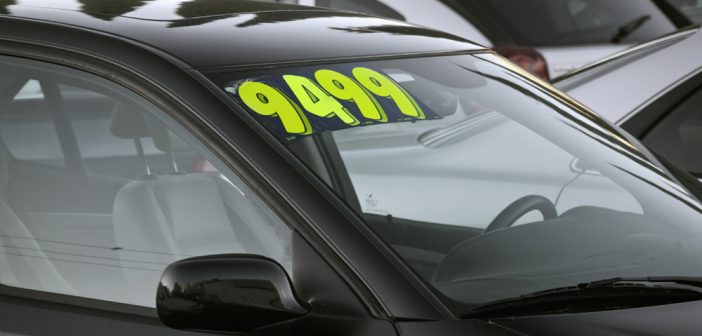Buying a car is one of the most expensive purchases people make. Purchasing a new car has its perks including a manufacturer’s warrantee and the confidence of knowing that the car has not been in an accident or need any major repairs. However, you pay handsomely for that security. On average, a new car will lose 11% of its value the second you drive it off the lot and will lose 25% of its value after the first year. There is no doubt that you can save a significant amount of money by buying a used car, but there are also significant risks. Here are 5 ways to spot a lemon and minimize your risks when purchasing a used car.
1. Do your research
The information age has put a tremendous amount of power in the hands of the consumer when it comes to the auto industry. No longer do you simply have to trust the spiel that used car salesman gives you. A vast amount of car shopping can be done online without ever leaving your home. There are a number of reputable websites that can give you a good indication of what you should be paying for a car.
Knowing the value of the car you want to buy will help you negotiate when it’s time to make a deal. You can always get a good price on a car that has been sitting in a lot for awhile. However, if a deal seems too good to be true, it probably is. If a car is priced well under value, be suspicious. Doing research will also help you not overpay for a car.
2. Inspect it thoroughly
While a vehicle report can be useful, they are not as reliable as would like you to believe. Car reports only show accidents that have been reported to insurance companies and repaired by authorized dealers. While you may not be knowledgeable about engines, there are certain telltale details that even the most inexperienced car buyer can spot if they look carefully.
Open the hood and check to see if everything looks neat, tidy and clean. If a car has been owned by an amateur mechanic, they may have made many repairs themselves, which will leave the engine compartment looking very haphazard. In addition, if the car has had a number of major repairs, it will look very patched together, especially if aftermarket parts were used. Spend time looking under the hoods of newer cars so you know what an engine compartment is “supposed to look like” when it comes directly from a manufacturer.
Look at the exterior of the car to make sure there is no damage to the frame. If the car was previously in an accident, there might be seams along the bumpers and the doors or trunk might not line up properly. Look for paint that is slightly mismatched or covered up. Also look for small chips along the edges of windows, headlights, taillights and rear view mirrors. While larger issues may have been repaired, small chips and cracks are often overlooked.
3. Get an inspection report
While you shouldn’t rely completely on an inspection report, it can help you recognize red flags. If the car was in a major accident, it may have been repaired cosmetically but still have damage to the frame, which will have a major impact on the life of the car. Check to see where the car is registered and research if there was ever any major flooding in that area. Many cars are paid off by insurance companies, sold at auction, repaired and shipped out of state to sell somewhere else. It’s also a good idea to check the VIN number with the DMV first to make sure it has not been reported stolen or have any liens on it.
4. Ask for a service history
Cars that have been well-maintained by previous owners will often come with a thick stack of paperwork showing the maintenance and repairs that have been done. If you are buying a car from a dealership that primarily sells a different brand of cars, you can request the VIN number of the car that you want to buy and directly call that dealership. Many auto repair shops report repairs based on the VIN number, so you can tell whether it has had its regular maintenance. In some cases, they won’t have a record to offer you because regular maintenance hasn’t been done.
5. Get a professional inspection
Once you have done your own research on what the price should be, performed a visual inspection of the car, and been provided a detailed history, it’s time to take it to a professional mechanic. Even though it may cost you a few hundred dollars to have an independent mechanic inspect it, it could save you thousands in the long run. Neither your own inspection nor a vehicle report can tell you if major repairs are just a few thousand miles away. Mechanics can also tell you if minor chips, dings or scratches are evidence of a major accident or just some natural wear and tear from driving.
When it comes to buying either a new or used car, there are no 100% guarantees. Even brand new cars can turn out to be lemons. However, there are a number of things you can do to minimize your risk. Always do your own due diligence and don’t believe everything a car sales person tells you.








